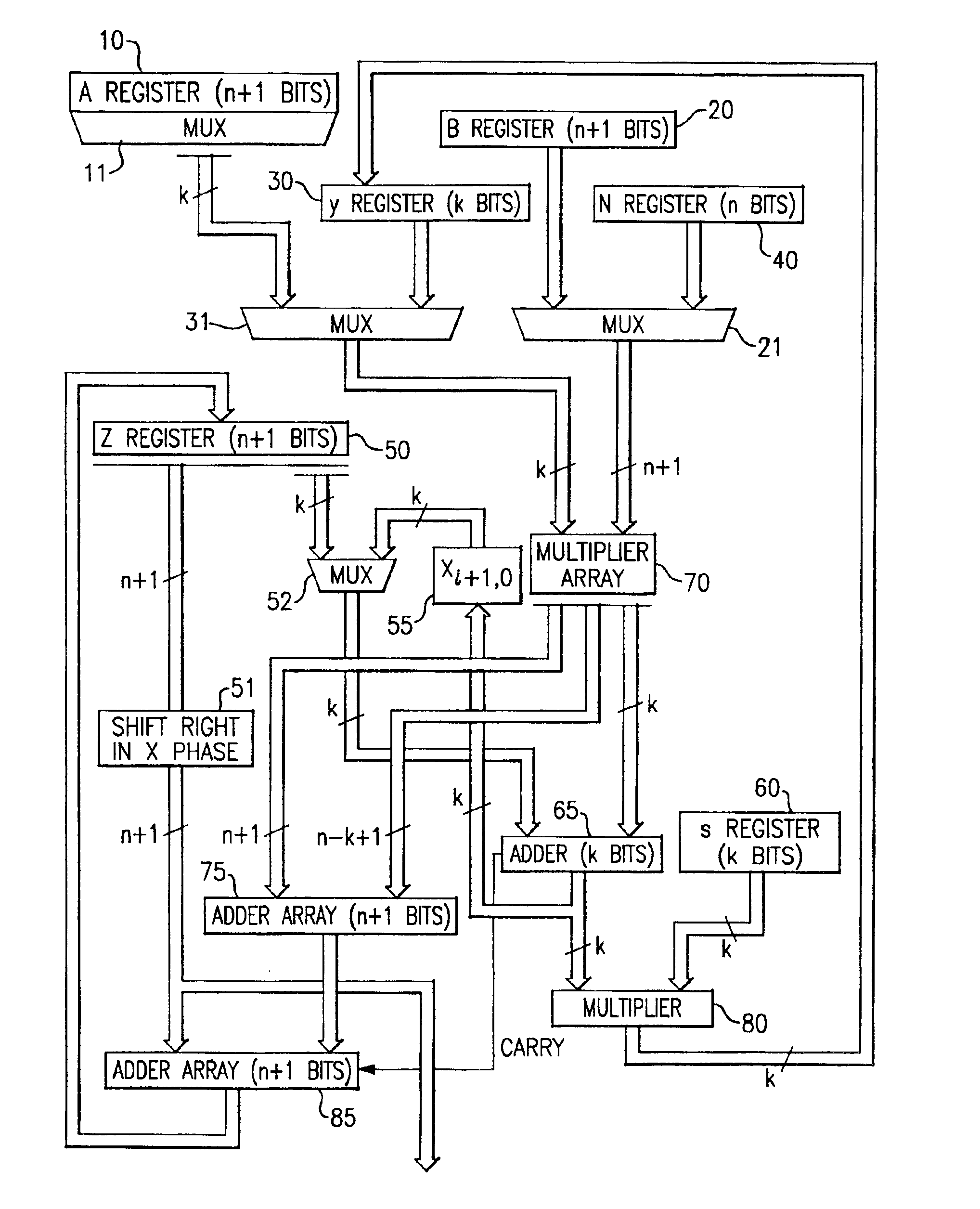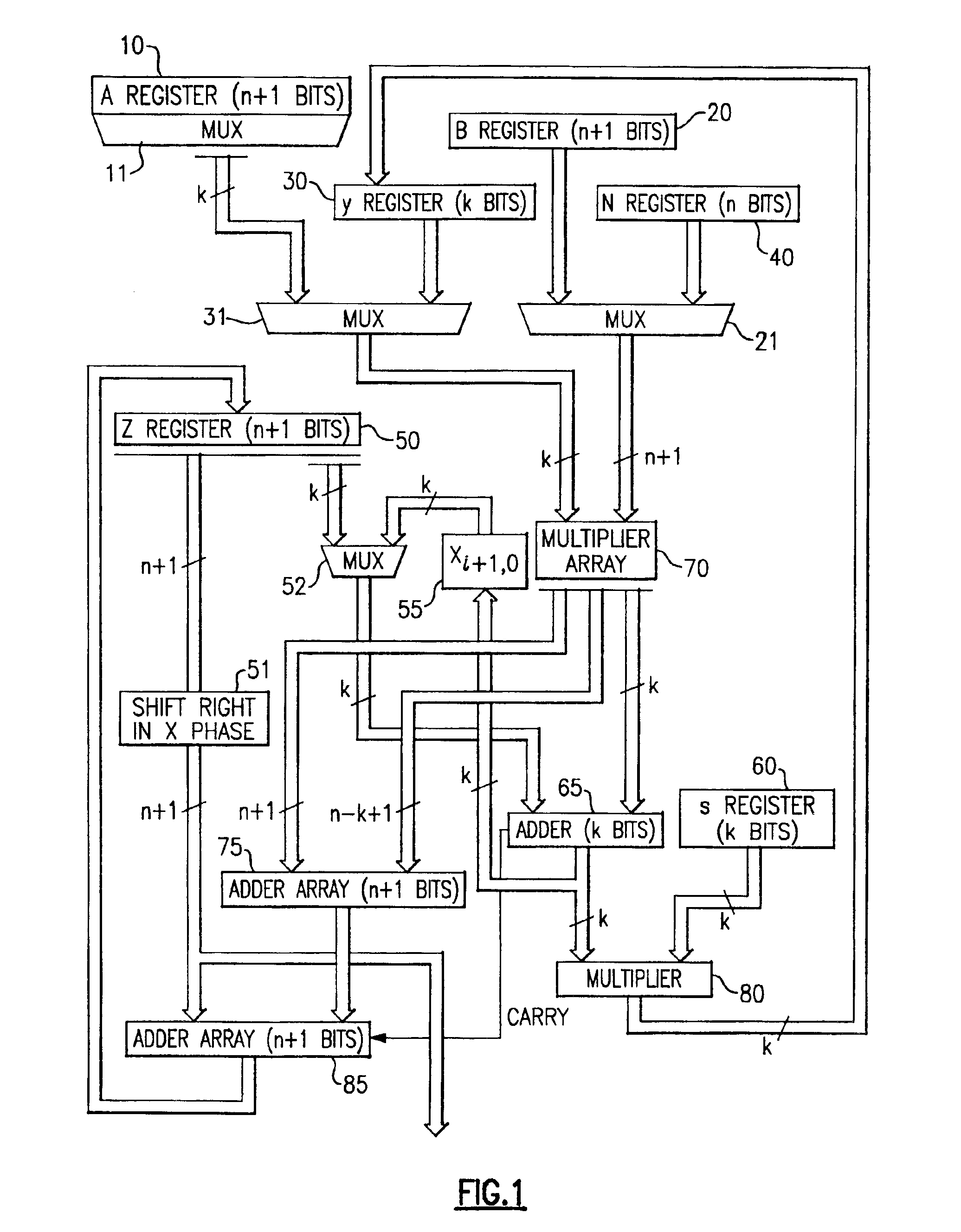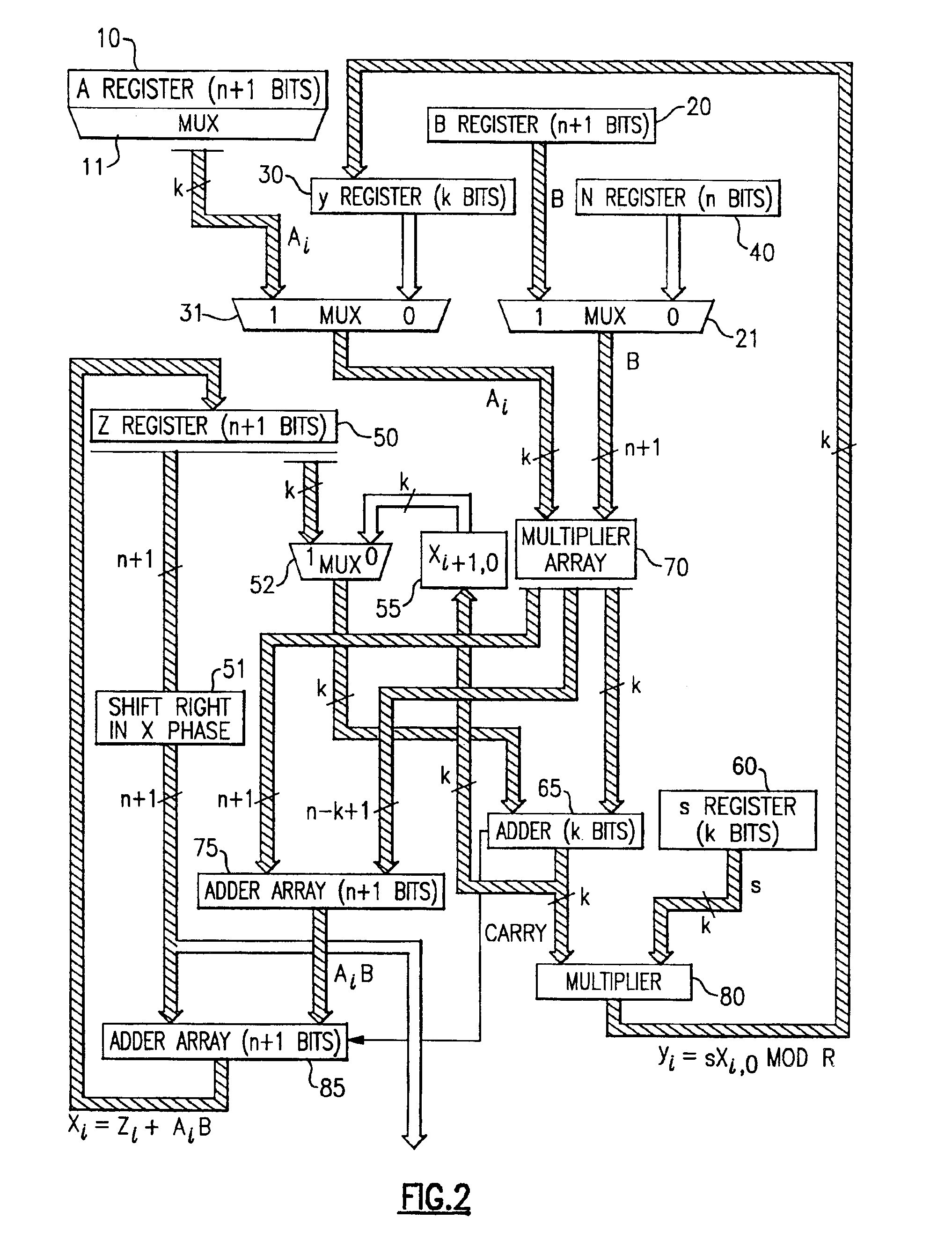Method for checking modular multiplication
a multiplication and modular technology, applied in error detection/correction, digital transmission, instruments, etc., can solve the problem of significant slowing down of calculation speed
- Summary
- Abstract
- Description
- Claims
- Application Information
AI Technical Summary
Benefits of technology
Problems solved by technology
Method used
Image
Examples
Embodiment Construction
[0084]The structure and operation of the present invention is dependent upon the partitioning of one of the multiplying factors into a plurality of k bit-wide pieces. Thus, instead of representing a binary number A as ∑i=0n-1 ai2i,
one of the multiplying factors in the present invention is represented instead in the form Am-1Rm-1+…+A2R2+A1R+A0=∑j=0m-1 AjRi,where R=2k.
In this representation, the number A is represented in block form where each of the m blocks includes k bits. That is, each Ai represents an integer having k bits.
[0085]In the present system, multiplication modulo an odd number N is a significant object. Also, for purposes of understanding the present invention, the symbol n is used to denote the number of bits in the binary representation for N. Also, for present purposes, it is assumed that the number A, as stored in Register A (reference numeral 10 in FIG. 1), is the number that is partitioned into m blocks. In general, the number of blocks m is selected to...
PUM
 Login to View More
Login to View More Abstract
Description
Claims
Application Information
 Login to View More
Login to View More - R&D
- Intellectual Property
- Life Sciences
- Materials
- Tech Scout
- Unparalleled Data Quality
- Higher Quality Content
- 60% Fewer Hallucinations
Browse by: Latest US Patents, China's latest patents, Technical Efficacy Thesaurus, Application Domain, Technology Topic, Popular Technical Reports.
© 2025 PatSnap. All rights reserved.Legal|Privacy policy|Modern Slavery Act Transparency Statement|Sitemap|About US| Contact US: help@patsnap.com



